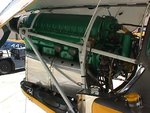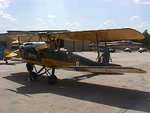syscom3
Pacific Historian
I was pondering "what engine made a difference that was different than from the others".
I thought the Merlin would fit the bill, but it wasnt an engine that radically changed the war or its outcome.
The R2800 was an excellent engine, but high fuel consumption does limit its usefullness for long range operations.
So I chose the -3350 as the whole B29 program would have come to an end (and it almost did because of the engine problems early in the war).
I'm now contemplating whether one of the lower powered engine's that powered the intermediate level trainers was more important. If there was one area of WW2 aviation that the allies were superior at, was the training of vast hordes of pilots that had an overall good quality. And a reliable engine for a trainer means a novice pilot will not auger in (as frequently).
I thought the Merlin would fit the bill, but it wasnt an engine that radically changed the war or its outcome.
The R2800 was an excellent engine, but high fuel consumption does limit its usefullness for long range operations.
So I chose the -3350 as the whole B29 program would have come to an end (and it almost did because of the engine problems early in the war).
I'm now contemplating whether one of the lower powered engine's that powered the intermediate level trainers was more important. If there was one area of WW2 aviation that the allies were superior at, was the training of vast hordes of pilots that had an overall good quality. And a reliable engine for a trainer means a novice pilot will not auger in (as frequently).


